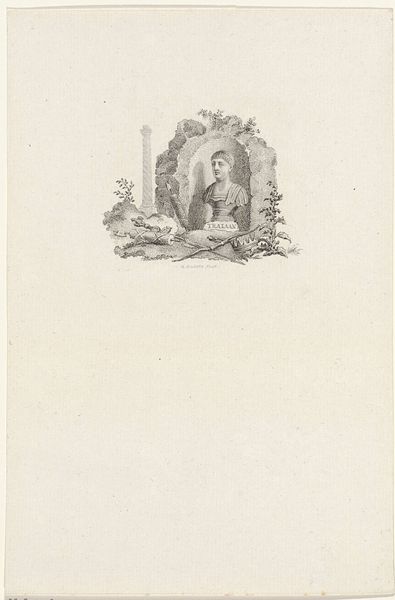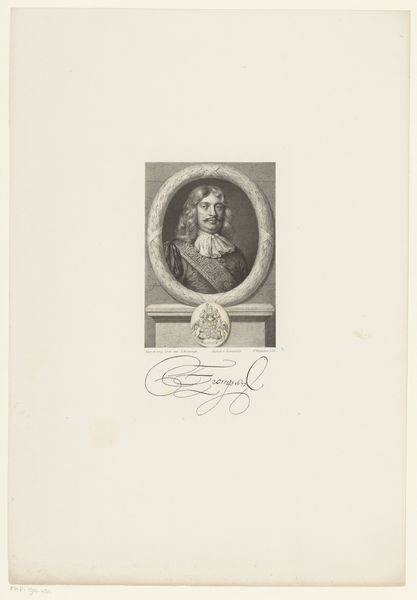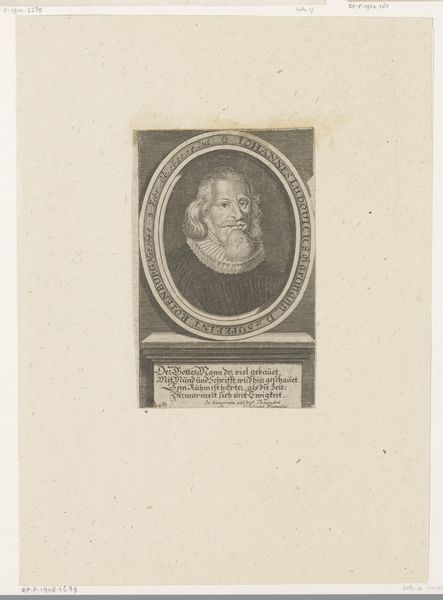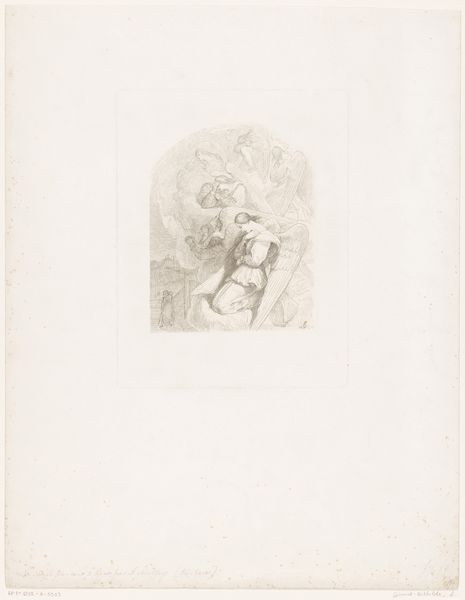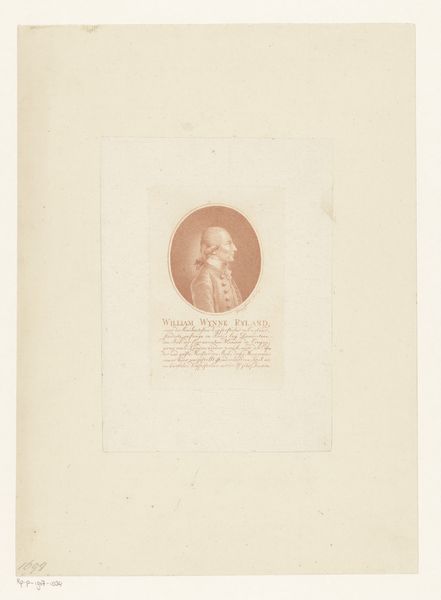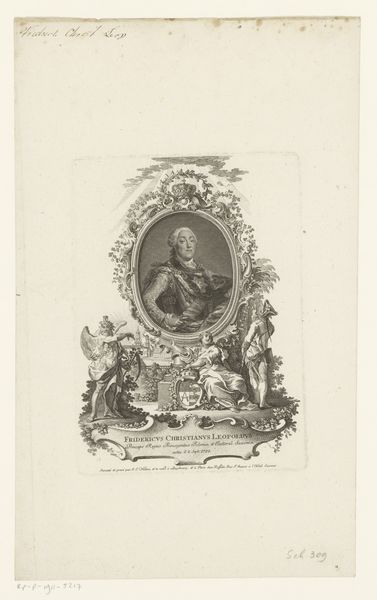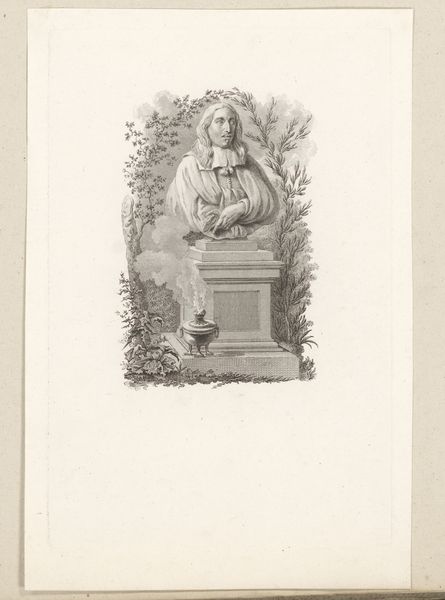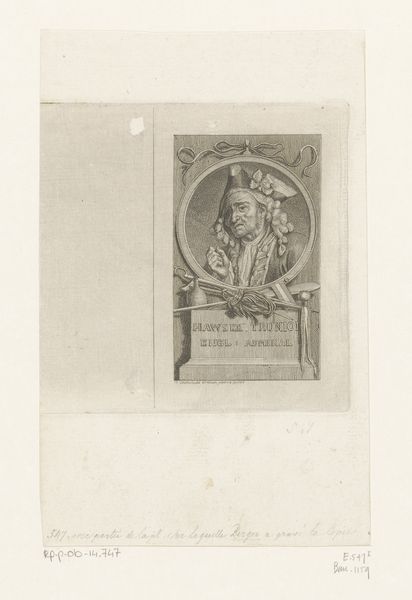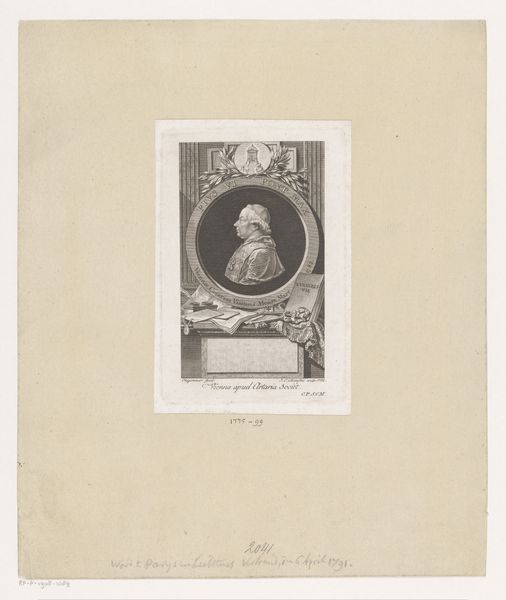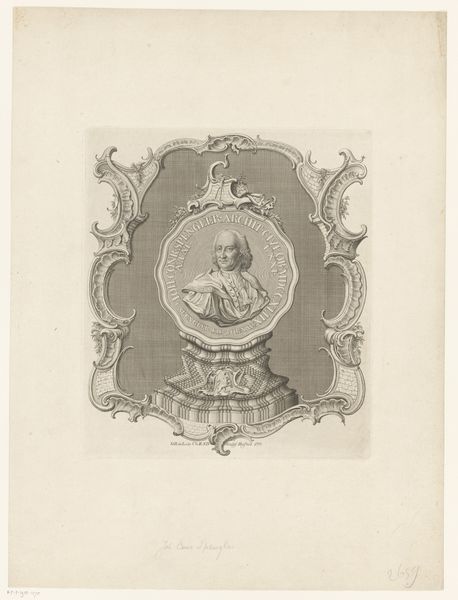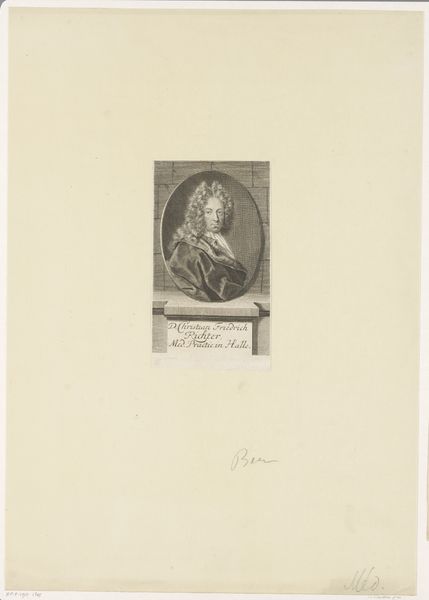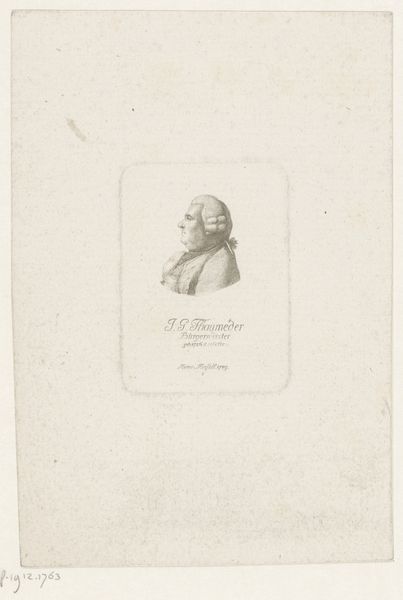
print, etching, relief, engraving
#
portrait
# print
#
etching
#
relief
#
figuration
#
history-painting
#
academic-art
#
engraving
#
monochrome
Dimensions: height 247 mm, width 167 mm
Copyright: Rijks Museum: Open Domain
Editor: This is Reinier Vinkeles' "Bust of a Man in a Niche," dating from somewhere between 1751 and 1816, residing here at the Rijksmuseum. It's a monochromatic print combining etching and engraving, quite small, and feels…stark. I wonder what it signifies to you? Curator: What strikes me is the deliberate use of the niche. Consider its crumbling state. It speaks volumes about the ravages of time, doesn’t it? And within it, this bust…likely intended to represent an idealized figure from the past. Note also the subtle foliage, almost reclaiming the stone. What feelings does that contrast evoke in you? Editor: A sense of inevitability, perhaps? That nature endures, even as stone erodes and empires crumble? Curator: Precisely! The artist invokes a complex relationship with memory. The idealized bust stands for cultural legacy. The decay hints at both the transience of fame and the cyclical nature of history. We remember to forget, and forget to remember. Editor: The inscription at the base…CHIRON? Was he a real person? Curator: In Greek mythology, Chiron was a centaur, a wise tutor to heroes. Placing his name here invites us to reflect on wisdom passed down and the burden of knowledge. It almost feels like Vinkeles is asking: What are we meant to learn from these figures of the past? And what will be their lasting impact on culture? Editor: So it’s more than just a portrait, it’s a commentary on history itself! That completely changes how I see it. Curator: Indeed. Symbols are powerful, aren't they? This piece reminds us that images hold layers of meaning. I’m so glad we got to unearth a bit of that today.
Comments
No comments
Be the first to comment and join the conversation on the ultimate creative platform.
